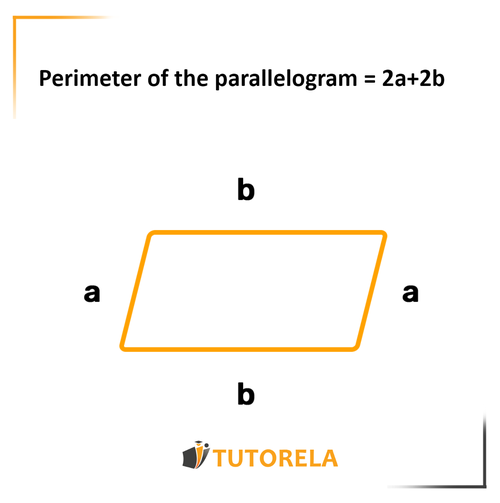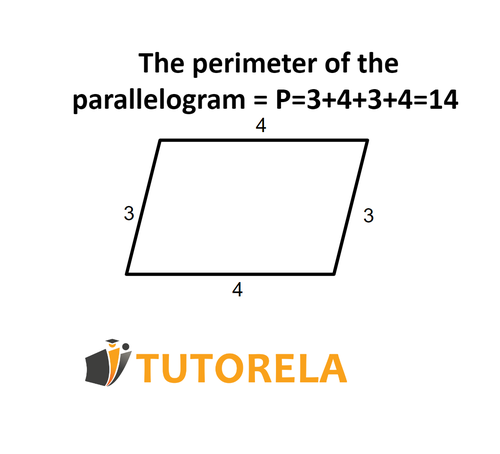The formula to calculate the perimeter of a parallelogram
You have probably already realized that it is not necessary to calculate all the edge lengths to find the perimeter.
Let's look at the parallelogram :
The equal edges are marked with the letters and . Let's note the perimeter of the parallelogram:
Now let's do it in a clear way.
The formula to calculate the perimeter of a parallelogram is:
or
There is no difference between both formulas, we can use whichever we want.

The perimeter of the parallelogram is equal to the sum of its four edges (or sides). As we know, in a parallelogram there are two pairs of opposite edges of equal length, therefore, knowing the length of two adjacent sides is enough to calculate the perimeter of the figure.
For example, if we observe the parallelogram , given the length of its sides in cm:
As we have mentioned, the perimeter is the sum of the length of its sides. Consequently, we will note:

Solution: The perimeter of the parallelogram is .